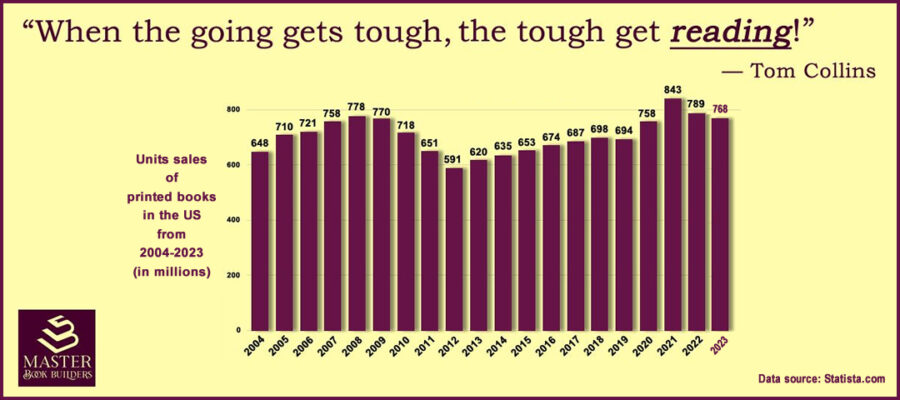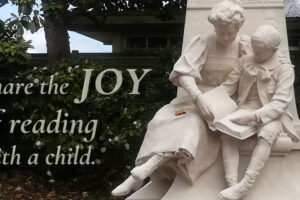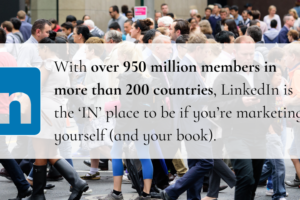Who’s Reading All Those Books? Surprise!
Last year I wrote a quick note on LinkedIn showing the chart in the banner image for this post, arguing that the spikes in US print book sales around the 2007-09 financial crisis and the 2020-21 COVID pandemic showed just what the caption says, “the tough get reading.”
I’ve added the sales figures for 2023 from Statista, which remain well above the pre-pandemic numbers. But stop and think about the raw total number of print books sold in the US last year: 768,000,000.
That’s roughly 3 books for every person. If we take the word of Americans in recent surveys, however, somewhere between quarter and nearly half read no books in the last year. Meaning those who do read books read more than the minimum, with some surveys showing an average of 12 books per year (including all formats).
By the way, print books still accounted for nearly 80% of all books sold globally in 2022. The latest figures I’ve seen on Wordsrated show ebooks and audiobooks at about 10% each, though the ebook share has declined slightly over the last couple of years, while audiobooks have grown almost 43% since 2017.
Who are These Readers?
Well, there’s the surprise. A pleasant one for me, since I’ve heard lots of people, even those in education, bemoaning the “fact” that young people don’t read, let alone read books, anymore.
According to a recent report on CNN, at least some of the growth in reading books comes from Gen Z and Millennials. The story covers a widespread growth in the number of book clubs.
Some of this growth comes in what our parents would not recognize as a book club. Social media has enabled reading communities to grow up around hashtags like #BookTok and #Bookstagrammer. As the New York Times put it in 2022:
“#BookTok, where enthusiastic readers share reading recommendations, has gone from being a novelty to becoming an anchor in the publishing industry and a dominant driver of fiction sales.”
Take a look at this recent screenshot and the diversity of those participating. Yes, that’s Drew Barrymore on Oprah’s Book Club on TikTok. But the 29.4 million posts come from all ages, ethnicities, and social groups. Except for those who don’t read, of course.

TikTok says that as of this writing, #BookTok posts have received 231 BILLION views. The CNN report says that’s more than #CarTalk and #MovieTalk.
And the cool kids are reading, too. Singing star Dua Lipa has launched her own online platform, with a book club feature that includes her own “monthly read” and a rich array of recommendations from her team and “guests.” She explained the book club to Harper’s Bazaar this way:
“Reading a book is one of the most profound joys in life. Reading provides a form of escapism, a way to understand human connection and helps us navigate human relationships. Through the pages of a book, I can go places that I have never been and feel like I have lived there for a lifetime.”
Her book club recommendations have a whole section devoted to nonfiction, too. Smart woman.
IRL, Too!
One of the most encouraging bits in the CNN report tells us that “in-person book clubs are emerging from trends on #Bookstagram and other social platforms.”
Among the interesting trends are book clubs held in breweries, “silent” book clubs where people gather just to read in the company of others, and “book club running groups” (which I’m guessing involve audiobooks and earbuds).
And some book clubs seem to be helping drive a recent growth trend in physical bookstores. The article reports that more than 250 new independent bookstores opened in 2022. And Barnes & Noble is growing, too, with 30 new stores opened in 2023 and 50 more planned for this year.
Bottom line, the next time you hear someone claim that nobody reads books, or that young people don’t read books, you’ll have two choices. You can attempt to show them it’s not true. Or you can smile and know that it’s not true AND that readers like you have a growing competitive advantage in life!






1 Comment
Leave your reply.